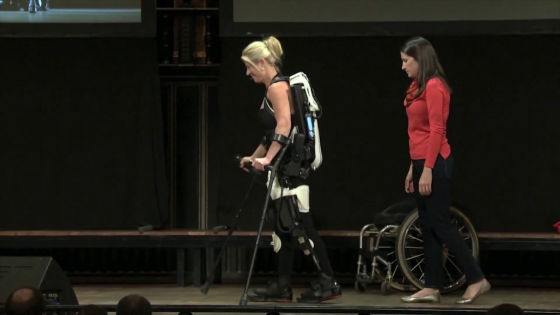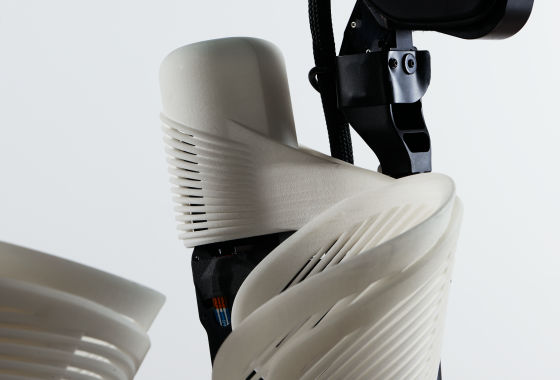The world's first robotic walking support machine made with 3D printers

Output food with 3D printerIt becomes possible,Technology to create lithium ion by printingHas been announced, 3D printers are beginning to be used in various fields. Three-dimensional printers capable of outputting even small objects that need precise work when created with human hands also advance into the field of medicine, and develop and sell 3D printing products3D SystemsIsEkso BionicsThe world's first robot-type walking support machine developed in cooperation with the development of a walking aid machine has been released to show that a person unrelated to lower body actually walks using a walking support machine.
3D Systems Prints First Hybrid Robotic Exoskeleton Enabling Amanda Boxtel To Walk Tall |
http://www.3dsystems.com/press-releases/3d-systems-prints-first-hybrid-robotic-exoskeleton-enabling-amanda-boxtel-walk-tall
In 1992 Amanda Boxtel was declared by the doctor "It will never be able to walk again" due to the ski accident caused by the waist downwards becoming unrelated. However, Boxtel, who had been forced to live on a wheelchair for 20 years since the accident, has succeeded in actually walking with a robot type walking support machine jointly developed by 3D Systems and Ekso Bionics.
You can see how Boxtel is walking with a robot type walking assistance machine outputted by the world's first 3D printer from the following movie.
Walking Again with 3D Printed Exoskeleton - YouTube
Boxtel sitting at the chair.

Try to support your body with crutches ... ...

I got up quickly. The hall is wrapped in big applause.

Boxtel 's move to start walking was smooth, it did not break the balance.


The robot type walking aid machine is about 3 months in production, it first scans the lower body and fits perfectly with Boxtel's waist and legsExoskeletonCreate a part with a 3D printer. According to the developer, Boxtel was unable to feel pain in the legs, so it was necessary to pay particular attention to whether the exoskeleton created was too tight.

Ekso Bionics added to the exoskeleton created with the 3D printer with the addition of the actuating device and the operation part of the walking assistance machine, and it was completed.

Scott Summit of 3D Systems said, "The exoskeleton outputted by a 3D printer fits tightly to the legs, allowing skin breathing, which has the advantage of not sweating, The skeleton plays an important role connecting body and robot type walkers, and I'd like to improve the quality of the role of connecting humans and robots in the future. "
Related Posts:







